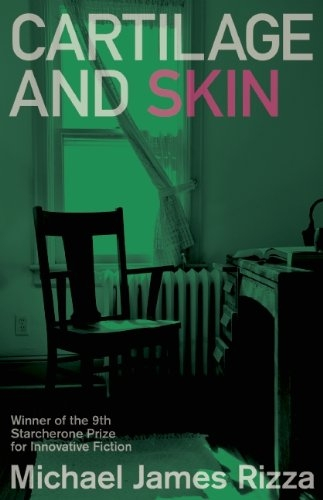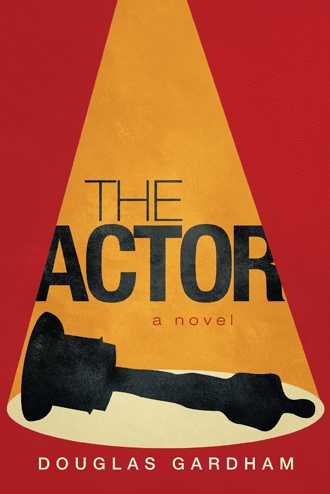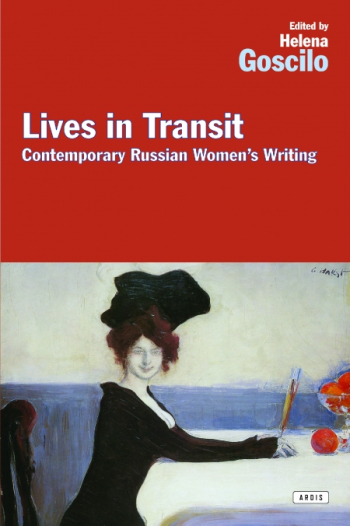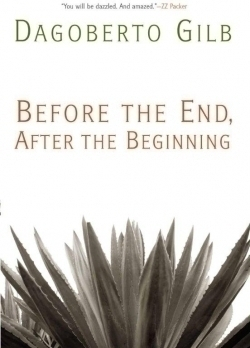Fans of The Girl on the Train: So You Like Your Narrators Unreliable? Try These
Everything we know about a story is told to us by the narrator. But what happens when you can’t trust the storyteller? The Girl on the Train is an example of an unreliable narrator. The movie, based on the Paula Hawkins novel, is in theaters now, and the lead character’s questionable account of the events are an essential part of the mystery. For the same thrill and skepticism, you can find an unreliable narrator in any of these books.
The Virgins

Pamela Erens
Tin House Books
Softcover $15.95 (288pp)
978-1-935639-62-6
Buy: Local Bookstore (Bookshop), Amazon
With a lyrical voice, Pamela Erens has written a novel about first love and sexual awakening that is multilayered and perceptive.
This novel of academia is set in a fictional boarding prep school, Auburn Academy, in late 1970s New England. Wispy Aviva Rossner is from the Midwest and is Jewish, while Seung Jung is Korean-American. Aviva is quiet and studious, while Seung tends to live more on the edge, particularly as he dabbles in drugs. Aviva’s family is distant, while Seung’s family is stern and foists high expectations upon their second son. An unlikely couple, the two are inexplicably drawn to each other and form a relationship that is both envied and ridiculed by classmates.
Aviva and Seung’s teenage exploration of intimacy, which arguably may not have be seen as shocking in present day, turns into scandal and shame in the setting of a 1970s boarding school. When Seung is caught sneaking out of Aviva’s room one night, it unleashes a downward spiral in their relationship and leads to tragic consequences.
Within minutes of arriving on campus, Aviva has an unpleasant encounter with Bruce Bennett-Jones, who is so overcome with passion for Aviva that he comes dangerously close to raping her. Though Aviva doesn’t speak to Bruce for years, his obsession does not recede but only ripens. What makes the story unique, and oftentimes unsettling, is that it is told in Bruce’s voice, though he sits on the sidelines. Bruce is essentially a voyeuristic observer in the relationship between Aviva and Seung, and the reader is left wondering how he could have known about their intimate conversations and sexual encounters, particularly as he speaks in the present tense. At times he admits that this is how he imagines what happened, which makes him an unreliable narrator, an unwanted third party in their relationship.
Bruce explains his interest in this way: “When I began to piece together this account, I did so simply to make sense of things, to create a plausible whole out of the fragments left behind … Later, as I amplified and embroidered (yet every little detail, every flourish I added seemed to bring me closer to the truth), I began to see my tale as a kind of restitution, the only type of penance I could then see to pay Aviva.”
Ultimately, though, Bruce’s importance to the storyline, and his role in the outcome, is revealed at book’s end.
What could loosely be described as a coming-of-age novel, the book touches upon themes of ethnic prejudices and the folly of youth. The slim book is thickly layered with prose that intrigues the mind and captivates the senses.
HILARY DANINHIRSCH (August 31, 2013)
The Cat Did Not Die

Inger Frimansson
Laura Wideburg, translator
Susan Ramundo, designer
Pleasure Boat Studio
Softcover $18.00 (302pp)
978-1-929355-89-1
Buy: Amazon
Swedish writer Inger Frimansson is back with a new thriller, The Cat Did Not Die. After absorbing this psychological descent into madness you may want to rethink how private that summer cottage is. You may even hide your ax.
The Cat Did Not Die’s opening chapters follow a developmentally stunted man who lives nearby the summer cottage of a young couple (Beth and Ulf). He does not understand that spying, breaking in, and stealing pillows from them are not appropriate activities—even if he does so for the sake of his missing cats. For his trouble he ends up dead.
The narrative picks up with Beth’s voice after she administers the coup de grace via ax to the head. Is it murder? Is it self defense? It seems that Beth is not entirely unwarranted in her action. She felt she was defending herself and her home. Yet soon, stories of her past emerge that hint that little Beth may just be a natural-born killer, someone who was violent right from the start.
The ensuing coverup starts a downward spiral for the couple, who have already suffered a few bad years: A late-term miscarriage and possible infidelity cast shadows over their future. It seems that Ulf just doesn’t like, let alone love, his wife anymore.
It’s hard not to echo Ulf’s feelings about Beth. She is an uneasy, self-conscious (possibly racist) creature—even on vacation. At the pool she can’t stand the dutiful African servants. The offer of a mere towel “made her feel trapped even though she felt more restless by the minute … [He] would watch her and even come up to her and ask, with a slight bow, if there was anything she needed. This made her embarrassed. She would wrap the towel closer around herself and shake her head no.”
Animals have something to say about Beth, too. A strange cat stalks Beth’s house after the killing. Horses panic in her presence. An elephant goes berserk when she is near.
Frimansson is no pulp writer—and her writing is particularly graceful when she is telling the story through Beth’s experience. With Beth as our unreliable guide, the prose is fluid. The story hums with evil portents if only because Beth is deliciously frail and doomed to get everything wrong.
Toward the close of the book, Frimansson switches to a third narrator. After the thrill ride in Beth’s head, the prose seems less personal, less menacing. Gone is the voyeuristic thrill of watching someone who is both cracked and cracking. Yet, for the most part, the book offers what a good thriller should—unyielding tension. But this time, our villain is also our victim.
Spoiler alert: The cat doesn’t die.
LEIA MENLOVE (February 26, 2013)
Cartilage and Skin

Michael James Rizza
Starcherone Press
Softcover $16.00 (328pp)
978-1-938603-19-8
Our ever-changing perception of reality is at the heart of Michael James Rizza’s unsettling debut novel. In Cartilage and Skin, Rizza shines an uncomfortable light on his voyeuristic antihero, Dr. Parker, an eccentric recluse holed up in an anonymous apartment, working on an undefined manuscript. Parker has an odd relationship with the people around him, from the nameless boy he sends on errands to the agoraphobic neighbor whose mail he diverts, but the former professor doesn’t think these things odd. He’s quite adamant about his innocence, actually, calling to mind the pleading, hyperrational voice of the madman in Poe’s “Telltale Heart.”
Like Poe’s madman, Parker is an unreliable—and creepy—narrator from the start, but Rizza conveys his perspective eloquently and consistently, half convincing the reader that maybe he’s right. Maybe there’s a reasonable explanation for the envelopes of pornography he hides, or for the presence of a street urchin in his apartment. On the other hand, would an artist truly abscond with Parker’s manuscript and borrow his chapter headings for her painting titles, as he believes? And what do we make of Dr. Parker’s extended inner monologues that consider the close relationship between violence and sexuality?
Rizza keeps us just off-balance enough to entice us to turn the page, trying to figure out what the uncanny Dr. Parker has actually done and what he has imagined. Unlike traditional thrillers, Cartilage and Skin is not so much concerned with who has committed what crime, but with the very way we define said crimes.
SHEILA M. TRASK (November 30, 2013)
The Actor

Douglas Gardham
iUniverse
Softcover $22.95 (352pp)
978-1-938908-66-8
Buy: Local Bookstore (Bookshop), Amazon
Gardham expertly weaves flashbacks, and the main character’s spotty memory, with parallel present-day scenes in this psychological mystery.
Ethan Jones can’t make up his mind. He planned on a dependable career as a mechanical engineer, but then Hollywood came calling. In his debut novel, The Actor, Douglas Gardham explores Ethan’s high-stakes decision to turn his back on a conventional career and instead chase his dream of stardom all the way to the Academy Awards. Part coming-of-age exploration and part psychological thriller—Ethan leaves a confounding trail of violence in his wake—The Actor puts readers in the hands of an unreliable narrator, leaving many threads unresolved until the final pages.
Gardham tells Ethan’s story in two different time lines, which makes for an intriguing puzzle. First is 1980s Ethan, a Canadian college student who falls in love with the beautiful and talented Mila Monahan and takes his first turn on stage at her prompting. He’s an immense talent, and they are a passionate couple, but things turn terribly wrong. Mila’s sudden disappearance throws Ethan into an unsteady fugue state that gets readers wondering exactly what happened. In alternating chapters, Gardham jumps forward to 1990s California, where Ethan determinedly climbs the ladder to cinematic success.
The chapters parallel each other, with Ethan’s relationships and performances echoing his earlier life. He’s back living with his old college roommate, Robbie, and falling passionately in love with a new woman, Christa, who, like Mila, meets a mysterious end. The repetition gets old, but readers who stick with it will see there’s a method to Gardham’s madness. He sprinkles enticing hints throughout, in the form of Ethan’s spotty memory and strange dreams about white rooms, wheelchairs, and hospital beds, but satisfyingly saves the resolution until the very end.
Several aspects of this first novel are inconsistently developed. Characters, for instance, are given uneven treatment. While Gardham fully explores Ethan’s psychology through inner monologues, for instance, he reveals little about Christa’s motives or nature. Female characters throughout tend toward glamorous stereotypes rather than fully formed personalities. Dialogue, too, has its strong and weak moments: Ethan and Robbie speak easily in the natural shorthand of longtime friends—“Dude, it’ll be okay”—but Ethan’s conversations with movie producer Sven are delivered in distracting dialect: “Zomezing vill vork out.” The same issue arises in description. Some passages hit the nail on the head, like the portrayal of an audition room through the eyes of an actor who has been to one too many seedy, back-alley auditions yet hopes this one will be the one. At other times, though, the book relies on clichés, particularly when articulating the longing of lost love: “If only he could hold her, touch her one more time, and share the moment.”
The Actor is a fairly long novel, but the continual switching between time periods keeps things active and keeps readers guessing. Gardham could tighten things up a bit by avoiding some of Ethan’s repetitive thoughts, though these play an instrumental part in the surprise ending. What can frustrate in the middle chapters turns out to satisfy in the end, when you find yourself saying, “Oh, I get it now.”
SHEILA M. TRASK (August 7, 2014)
Two or Three Years Later
Forty-Nine Digressions

Ror Wolf
Jennifer Marquart, translator
Open Letter
Softcover $14.95 (142pp)
978-1-934824-70-2
Buy: Local Bookstore (Bookshop), Amazon
To read this surreal series of madness, first check your sense of reality at the door.
“A man, whose name I’ve thankfully forgotten, came up to me and said something that I’ve thankfully forgotten.”
So begins “An Almost Complete Portrayal of the Conditions in Maybe Waabs”—at ninety-three words, one of the shortest of shorts in this collection. It is a story about the narrator’s “most dangerous” moment. “Thankfully,” he can remember nothing about it, but this good fortune does not extend to his reader, who is left to wonder how the writer can claim his “portrayal” is “almost complete,” yet he is all but unable to remember or render it.
All of the “Forty-Nine Digressions” in this collection will have a similar impact on readers. The pieces, and Wolf is correct in calling them digressions, defy analysis. Perhaps a comment can be made about plot, a character or two, or a setting or an item of dialogue, but they do not seem to be elements of a coherent whole. Sometimes an overall impression—of dread, misfortune, or pleasure—can be ascertained despite the vagueness, circularity, and repetitiousness. But more often than not, the narrator is unreliable: he has forgotten, is “not in the mood,” or will not continue because what happened is “utterly meaningless.”
Ironically, the resulting surreality prompts a close reading, which, ironically again, provides little in the way of payoffs or meanings unless readers consider that the “funny story” is rarely to be found in plot, characters, or action, but in the narrator’s intrusions and intersections. Wolf, often posing as reporter or chronicler, cannot help but stumble comically—like in a television routine featuring Jonathan Winters or Lucille Ball—into his story, disputing details with his characters and himself (“it happened on a Monday; but it may have been a Tuesday”). Or, he may exit the story to check the soup, which is warming on a hotplate and “still doing good.”
Perhaps Wolf’s age (born in 1932) and background in radio (his plays and “sound collages” were well known in Germany in the 1960s) may shed some light on this madness. And it may also be true that Europeans know better than to read Wolf without first checking their sense of reality at the door. For Wolf, pleasure, pain, indeterminacy, and confusion trump our sense of the world and meaning. And this, perhaps, is the statement Wolf is making through his work: that truth is elusive, at best, and it is presumptuous to think one can reveal that which can only be obscure.
JOE TAYLOR (May 31, 2013)
Lives in Transit
Contemporary Russian Women’s Writing

Helena Goscilo, editor
Ardis Publishers, Inc.
Softcover $25.00 (421pp)
978-1-4683-0155-7
Buy: Local Bookstore (Bookshop), Amazon
Helena Goscilo, Chair and Professor in the Department of Slavic and East European Languages and Literatures at Ohio State University, has edited a remarkably satiating, intelligent anthology featuring short stories by twenty-three of Russia’s eminent and emerging women fiction writers as well as selections from six poets, several of whom are translated into English for the first time. Through stories that were mostly penned during the 1980s, Lives in Transit examines challenges wrought by household concerns, love, sexuality, and other traditionally “feminine” topics in settings that range from apartments in Leningrad and Moscow to a rural abortion clinic. Male and female narrators with divergent backgrounds and varying degrees of ingenuity, aplomb, and resilience confront modernity and its sometimes harsh conditions—including violence and poverty—with occasional encounters with quiet heroism.
In “Sergusha,” by Alla Kalinina, and “Vera Perova,” by Nadezhda Kozhevnikova, the workplace bristles as a proving ground, the former for an ingenue who seeks her employer’s attention, and the latter for the titular character determined to be known for her own achievements rather than for beauty and its privileges; in the fabular “Wicked Girls,” by Nina Sadur, a magical occurrence puzzles a couple, while in Tatiana Nabatnikova’s realistic “A Bus Driver Named Astap,” an athlete is raped by her team’s driver; both stories expertly play with themes of menace, power, and the absence of power; in “Going After Goat Antelopes,” by Svetlana Vasilenko, and “Where Did the Streetcar Go,” by Irina Polianskaia, unreliable narrators create versions of another character’s circumstances that intrigue with psychological implications; and in Liudmila Ulitskaia’s “Gulia,” and “Slowly the Old Woman … ,” by Nina Katerli, aging women attempt to maintain their dignity in spite of their diminishing means.
Other stories deserving of special mention include Dina Rubina’s “The Blackthorn,” featuring the son of divorced parents who wrestles between loyalties in a rich narration that shuttles between the delights of childhood and increasing doubts; “First Try,” by Viktoria Tokareva, a portrait of a bold, imposing character whose final illness robs her of the charms she had relied upon; and “Uncle Khor and Koriakin,” by Galina Shcherbakova, an account of two unrelated men caring for a daughter after her mother’s death. For women’s studies, fiction, translation, libraries, and personal collections, Lives in Transit is an essential choice. Goscilo’s sharp sense for drawing powerful voices together in ways that dialogue with each other results in a provocative work.
KAREN RIGBY (February 26, 2013)
Before the End, After the Beginning

Dagoberto Gilb
Grove Press
Softcover $24.00 (192pp)
978-0-8021-2000-7
Buy: Amazon
The quote is well-worn: “It’s the journey that matters.” Dagoberto Gilb’s appropriately titled new collection—*Before the End, After the Beginning—*gives us ten such adventures. And Gilb should know a thing or two about journeys, having written most of these stories over the months he recovered after a stroke.
“please, thank you,” the first in the collection, is the story of a man in the hospital crawling back to life after a stroke. The grammar itself takes a most basic form—no capital letters, no apostrophes. The narrator’s perspective, as a stroke victim, is reliably unreliable: “so i started not answering, ignoring them back, or yelling at them. maybe yelling is what I was doing in my mind. maybe muttering under my breath is what I did.” Over the course of the story, the narrator moves from intensive care to a shared room to various therapies—all preparing for a return home, which is both a relief and a realization: “i am a name, just another, one they think is foreign even, when there are so many hurting. a process of recovery that is simply what happens within hospital walls: i want to say thank you to all of them, even though theyd forget in sixty seconds. were all moving onward. tomorrow someone else is here.”
The collection ends with “Hacia Teotitlan”—the story of a man coming home to die. Ramiro Areyzaga returns to Mexico, a place he hasn’t visited since he was seven. There is much to be remembered. Most poignantly, “the church, like none he’d ever seen since, all the cool stone space, and God—which he never got over, so much so it stayed inside him, quietly, the rest of his life, like it was the word Mexico itself.” His rented room—a basement apartment—is its own sort of tomb, but one that allows him pastries and newspapers and walks, one that allows him to make peace with what will come next.
The stories between these two powerful bookends represent other kinds of journeys—men hard on their luck, looking for fresh starts; men who have started over but may never fully sever the past from the present; young boys who are just beginning to open their eyes to the ways of the worlds they inhabit. Explains the cop in “Blessing:” “You were born. Until you die, the rest is on you. I’m just doing my job.” The journey is up to us.
Gilb lives in Austin, Texas, and is the author of several books, including The Flowers, Gritos, and Woodcuts of Women.
S. HOPE MILLS (November 17, 2011)
Hannah Hohman
